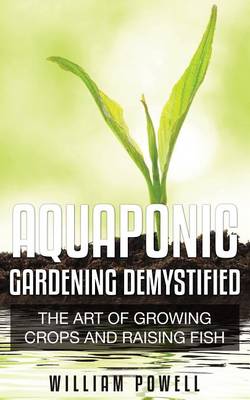Reviewed by annieb123 on
A quote:
Aquaponic systems are easy to assemble- These systems can be easily installed even by those who are not DIY enthusiasts. Most of the kits come with detailed step-bu-step instructions. In fact, it is not only easy to setup but also easy to disassemble and move. It is (sic) best growing method for all those who rent an apartment or a house and are more likely to move'.
The entire booklet is full of very general fluff statements interspersed with seemingly random free floating needlessly technical statements that add nothing of substance to the text and leave the reader wondering where they came from.
A minimum of three places in the text, the author states the importance of equally functioning parts of a whole system, none of which are more important than the others. He then goes on to say (quote) 'One of the most important pieces of equipment in the aquaponic garden is the rearing tank'. (What? A rearing tank? What's that? Where did it come from? Why wasn't it listed as part of the system earlier?) After that non-sequitur, without explaining anything other than 'the rearing tank is a specially designed for raising baby fish'. (A specially designed ...what? tank, I am assuming). He says 'The shape of the rearing tank is very important. In times past most fish farmers used a reticular tank (rectangular? who knows..he never explains) to raise baby fish. However round rearing tanks with sloped floors, a central drain and inlet piping which use centrifugal force and gravity to remain clear has proven to be very effective'. Wait, what?
The author states that one of the most attractive facets of aquaponics is that the interdependence of plants filtering fish waste from the water and cleaning it for recirculation to the fish rendering water changes largely unnecessary once the system is stable then goes on to say that rearing tanks must be tested and the water changed very frequently.
In short, if you were interested in the concept of intensive sustainable agriculture (and we all should be), you would be hopelessly confused and turned off by the time you finished this booklet.
For people who are looking for an introduction to the subject, start with the wikipedia entry which has some good links, look up some of the experimental work done by the University of the Virgin Islands (google it, amazon doesn't allow links in reviews), and youtube has a lot of very simple, accessible, understandable how-to videos.
DON'T be put off by bad/confusing books. Aquaponics is an amazing tool for increasing independence in a sustainable and ethical manner. Additionally, I can say from personal experience that there's almost nothing better than spending an hour in the greenhouse, hearing the water trickling, enjoying the warmth and interacting with the plants and fish. It would absolutely be worth it even without the added benefit of low cost healthy local clean food for yourself and your family.
I hate giving 1 star reviews. I am passionate about sustainability and food production and despite the fact that I borrowed this booklet from my public library and didn't pay anything for it, I feel cheated. I shudder to think of someone who is looking for information about aquaponics trying to decipher this booklet and being permanently dissuaded from even trying to go further.
Reading updates
- Started reading
- 19 August, 2014: Finished reading
- 19 August, 2014: Reviewed
